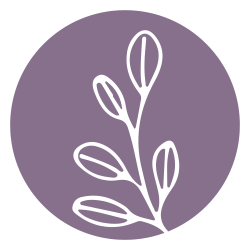Natural ways to manage your blood pressure
By Dr. Andrea Hilborn, ND
Originally published in the Kingston Whig-Standard.
High blood pressure, known as “hypertension” in medical-speak, affects more than 20% of adults in Canada. Having hypertension increases your risk of stroke, heart attack, heart failure and death — this is serious stuff. Tragically, hypertension in children is on the rise, and health-care practitioners are now told to start measuring children’s blood pressure beginning at the tender age of three.
The last two Nature’s Way columns have addressed insulin resistance. High blood pressure and insulin resistance are both criteria for a condition known as metabolic syndrome. They are two related aspects of metabolic disorder that increases risk of heart disease, diabetes and death.
Conventional and alternative medicine both agree that the No. 1 way to treat hypertension is through diet and lifestyle. Furthermore, many of the pills given for hypertension come with unpleasant side effects, such as the persistent dry cough associated with ACE-inhibitors (drugs whose name end with ‘-pril’).
Changing you diet or lifestyle is more difficult than taking a pill, but it is worth the effort — diet and lifestyle changes come with side benefits rather than side effects. The focus of this article will be on specific actions you can take that will lower your blood pressure.
Most recommendations for reducing blood pressure focus on foods to avoid. However, there are some foods that show promise in reducing blood pressure when eaten.
People who drank 50 ml of pomegranate juice daily for two weeks reduced their systolic blood pressure by 5%. Other people, who drank pomegranate juice for one year reduced their systolic blood pressure by 12%. Beet juice may have a similar effect.
Prunes have developed a somewhat unsexy reputation due to their association with bowel movement regularity, however, people who ate six prunes per day for eight weeks reduced their blood pressure and their LDL cholesterol levels.
One study looked at a set of diet changes that included eating a lot of fibre, soy, plant sterols and almonds. By four weeks into the study, participants had reduced their systolic blood pressure by four points on average. The researchers found the the almonds seemed to be making the biggest difference. You need to eat about 40 almonds per day to get the effect. Almonds should be eaten raw. Walnuts and pecans, which have similar properties to almonds, may give the same benefit.
Supplementation with fish oil can lower systolic blood pressure by 2.5 points and diastolic blood pressure by 1.5 points.
Low-fat diets, in my opinion, have produced poor results in terms of blood pressure management. Modified fat diets, where the proportion of poly-unsaturated and mono-unsaturated fatty acids are increased, have performed better than low-fat diets, but the results are not Earth-shattering. A major review of low-fat and modified-fat diets by the well-respected Cochrane Group found that reducing fat had no impact on risk of cardiovascular disease.
Eating a modified-fat diet reduced risk of cardiovascular disease by an underwhelming 14%. Neither reducing nor modifying dietary fats had any impact on risk of death from cardiovascular disease or risk of all-cause mortality (death for any reason).
Two other measures worth mentioning here are cardiovascular exercise and stress management. One easy way to multi-task is to exercise and reduce your stress all at once by getting in a 15-minute walk every day. One of the best measures of heart disease is how much calcium has been deposited in your major blood vessels. We once thought that this was an irreversible condition, but now at least one study has shown that 40 minutes per day of interval training can reverse the calcification of arteries.
Deep-breathing is a stress-management tool. Participants in a study were asked to take three deep breaths every two hours while they were awake and monitor their blood pressure before and after doing the breaths. Over the course of two weeks, systolic blood pressure was more than five points lower, on average, with deep breathing. A more convenient way of doing this is to do 10 minutes of deep breathing each morning.
Weight management is another factor that can help you in your mission to maintain healthy blood pressure. It is a huge topic on its own, beyond the scope of this article. For more information, visit my website to get a copy of an ebook I wrote on the subject. (www.natural-route.com/services/true-weight-program).
Reduction of sodium intake is often recommended. A brand new review of all the studies conducted on sodium intake, published in the American Journal of Hypertension, found that eating too little sodium also increased risk of heart problems.
The reviewers found that universally recommending sodium reduction is a bad idea. The information to date indicates that sodium intake between 2.5/6.0 grams per day is the “safe zone” — any more or less puts us at risk. Note that most people take in the vast majority of their sodium through processed foods, not table salt.
The key to success when using natural methods to manage your blood pressure is to use a scatter-shot approach: don’t just take a fish oil supplement or just take a daily walk. You need to include multiple recommendations into your daily routine in order to get the result you are looking for.
The first step to managing your blood pressure is to find out where you are now. Ask your family doctor, a nurse, or a naturopath to take your blood pressure. Many drug stores now have blood pressure machines available to customers, who do not even need an appointment. These machines are great for evaluating adults, but are not appropriate for children. By taking action today, you can reduce your risk of disease in the future.

